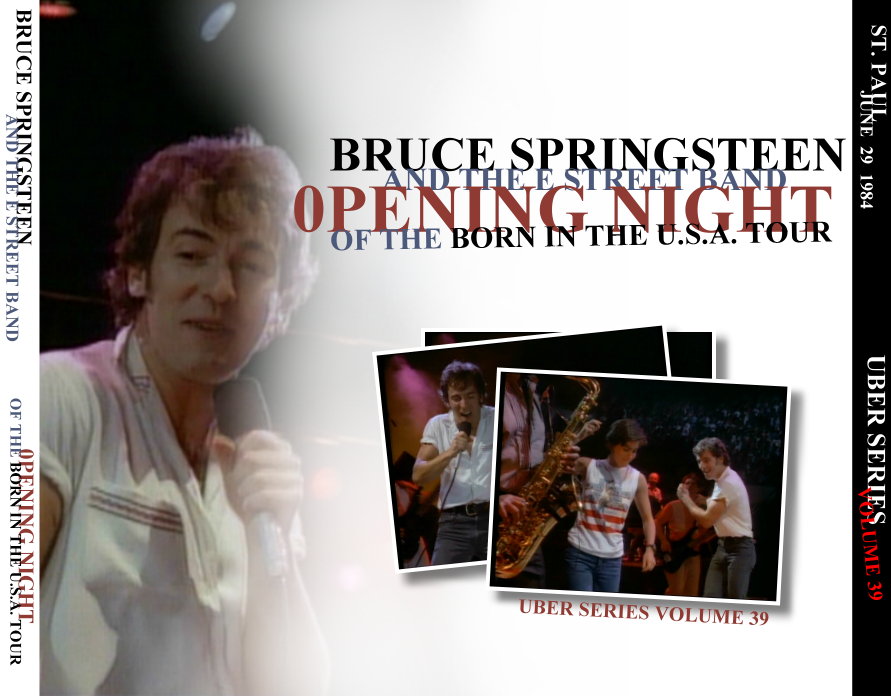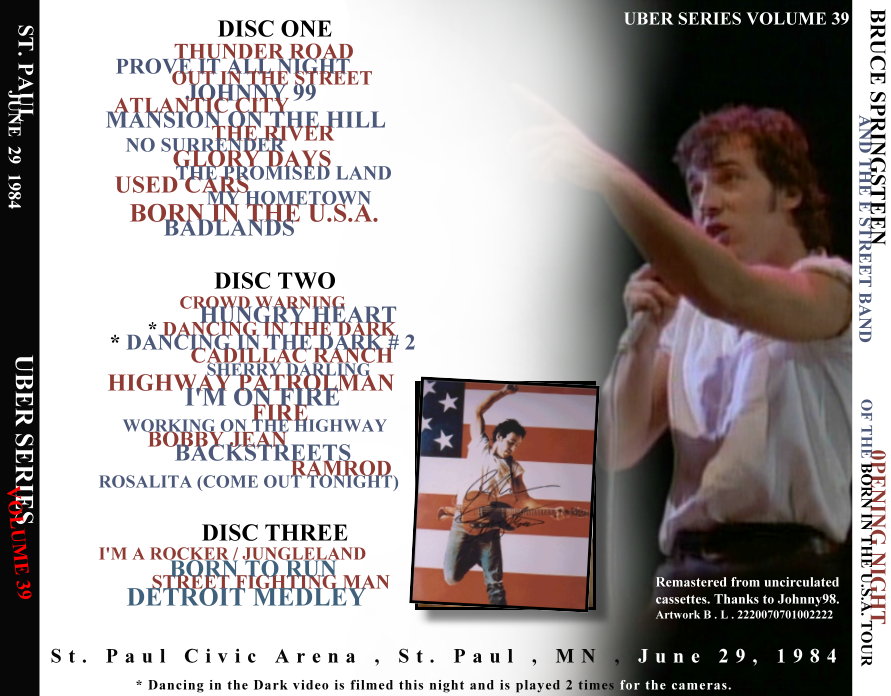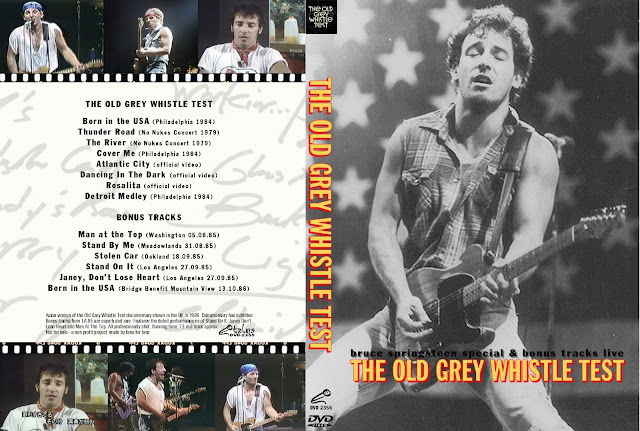Spero che questo articolo del 1984 sia di vostro interesse.
Che ne pensate?
BLUE-COLLAR
TROUBADOUR
At 34, Bruce Springsteen has never been better, as his barnstorming road showrollsacrosstheU.S.A by Chet Flippo
Groaning and sweating cannonballs, Bruce Springsteen jounces along in the passenger seat of a packed-to-the-gunwales van barreling out of downtown Detroit at 4 in the a.m. He radiates waves of locker-room Ben-Gay powerful enough to knock down a charging rhino at 30 yards. And he s happy. Happy as only a certifiablyfanaticalrock n rollercan be when he has just strapped on his Fender Telecaster guitar and blown away 24,039 also certifiable rock fans in the very heart of Motor City. Home of the Cadillac and of the Motown Sound. A tough audience. Bruce had just brought them to their knees with three and a half hours of no-mercy, flat-out rock n roll played the way God intended, and now he issuffering for it. Even after a half-hour rubdown by his trainer, Bruce aches from the grueling marathon of singing, dancing and screaming.
Man, he rasps in that familiar Jersey Shore staccato, this was a four and a half tonight. A visitor crammed up against a guitar case behind him asks what he means. I usually lose between three and five pounds during a show, he says. This felt like a four point five. He laughs a contented laugh, and the van sails on through the night.After laying out for three years, the Boss is back with a vengeance. Back with no flash, no lasers, no glitter, no glove. Back with his highly personal brand of straight-ahead, gJoves-off rock overlaid with a deceptively folksy vox populi that has made him the poet of the blue-collar baby boomers, for whom his carefully wrought songs sound like letters ftom home. Just as Hank Williams and Woody Guthrie did before him, Springsteen articulates the thoughts of an entire class of people. And right now nobody does it better. In Detroit Springsteen learned that his new album, Born in the U.S.A., was No. 1 on the charts, the LP s first single release, Dancing in the Dark, was No. 2, and the tour was steaming along at such a pace that he had sold 202,027 tickets—that s 10 nights—at Brendan Byrne Arena in home state New Jersey in just two days. And the tour (this week Bruce is in Washington, D.C.) is going to continue for at least a year, with forays to Canada, the Far East and Europe.
Given all that, the trappings of rock superstardom were astonishingly absent backstage at Detroit s Joe Louis Arena earlier on the balmy summer evening. The fans milling around outside were so well-mannered that even the cops were yawning. No stretch limos for the rock stars; just unobtrusive vans. No stiletto-heeled, slit-skirted, glossy groupies stalking their turf. In the dressing rooms and the tunnels backstage, there were no drugs and nothing stronger to drink than beer.
Welcome to the Hardy Boys on the Road, laughs a management associate. She s kidding, of course, but there s a hearty, all-American air to the proceedings that one doesn t usually find at this sort of event. Sit down, comes a holler from a man with a familiar rock face. He s assistant road manager Chris Chappel, for many years in The Who s organization. Chappel explains he s happy to be here for many reasons. For one: Sanity, no drugs. For another, he s a fan: When I first saw Bruce at Hammersmith Odeon [in London] in 1975, I knew immediately that the rock n roll torch had been passed from the Beatles and the Stones and The Who to him. I had never seen such a great show. And I still haven’t.”
Meanwhile, Bruce is winding up his usual exhaustive sound check in a cavernous hall. He is one of the few rockers who bothers to do a walk-through, listening carefully from every area of the hall while his band is playing. Then he disappears into his dressing room,to remain alone until the show starts. This is a typically exuberant Bruce crowd, screaming Brr—uuu—ce chants that sound like “boos” to the uninitiated. They
hold up lighted matches and those 99-cent discount lighters and scream for Br—uuce some more. Then they stomp and shake the floor and do the Wave and cheer each other. When Bruce finally gains the stage at 8:35 p.m., the spontaneous roar from 24,039 throats is seismic, physically felt, unsettling in its Intensity. Most performers never get thls klnd of ovation when their concerts end. Bruce is clearly among friends In Detroit. He’s a folk hero in his biker boots, tight jeans, kerchief headband and short-sleeved sport shirt with Its sleeves rolled up to display his newly pumped-up biceps. And he’s sporting a proud attitude that proves to be contagious when he rips into Born in the US.A., a blue-collar anthem of the ’80s If ever there was one (kid gets drafted, sent to Vletnam, then prison and every other raw deal possible, but remains a “cool rocking Daddy In the U.S.A.”). The applause is, of course, thunderous. Some of the blue collars in the $14
seats behind the stage (all tickets are $14 or $15) unfurl American flags.





